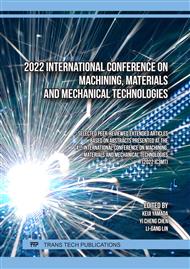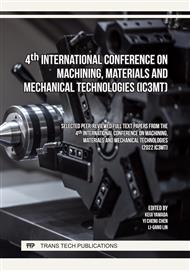p.3
p.11
p.19
p.25
p.33
p.41
p.51
p.59
Fatigue Analysis of Monopile Foundation for Offshore Wind Turbine
Abstract:
This study is aimed to estimate the fatigue damage ratio and to analyze the structural integrity for the monopile foundation of NREL 5-MW wind turbine. For simulating the uncertainty of environmental conditions, various random seeds, tide heights, and wave orientations are considered in the analyses. The Design Load Case 1.2 of IEC 61400-3 is applied in this study. A sequential approach is adopted to calculate the fatigue damage ratio. Firstly, the environmental conditions are implemented into the BLADED code. Secondly, ANSYS is employed to compute the stress/deformation using the output loading data from BLADED. Finally, the fatigue damage ratio is calculated by MATLAB using relevant fatigue theories. The results show that an increase in tide height causes a greater fatigue damage in the foundation. The maximum fatigue damage ratio is found in the case with a middle wind speed which is closer to the rated wind speed and is associated with the occurrence probability. The overall results demonstrate that the methodology developed in this study is applicable to the assessment of fatigue damage in the monopile foundation of OWT.
Info:
Periodical:
Pages:
11-17
Citation:
Online since:
February 2024
Authors:
Price:
Сopyright:
© 2024 Trans Tech Publications Ltd. All Rights Reserved
Share:
Citation:



